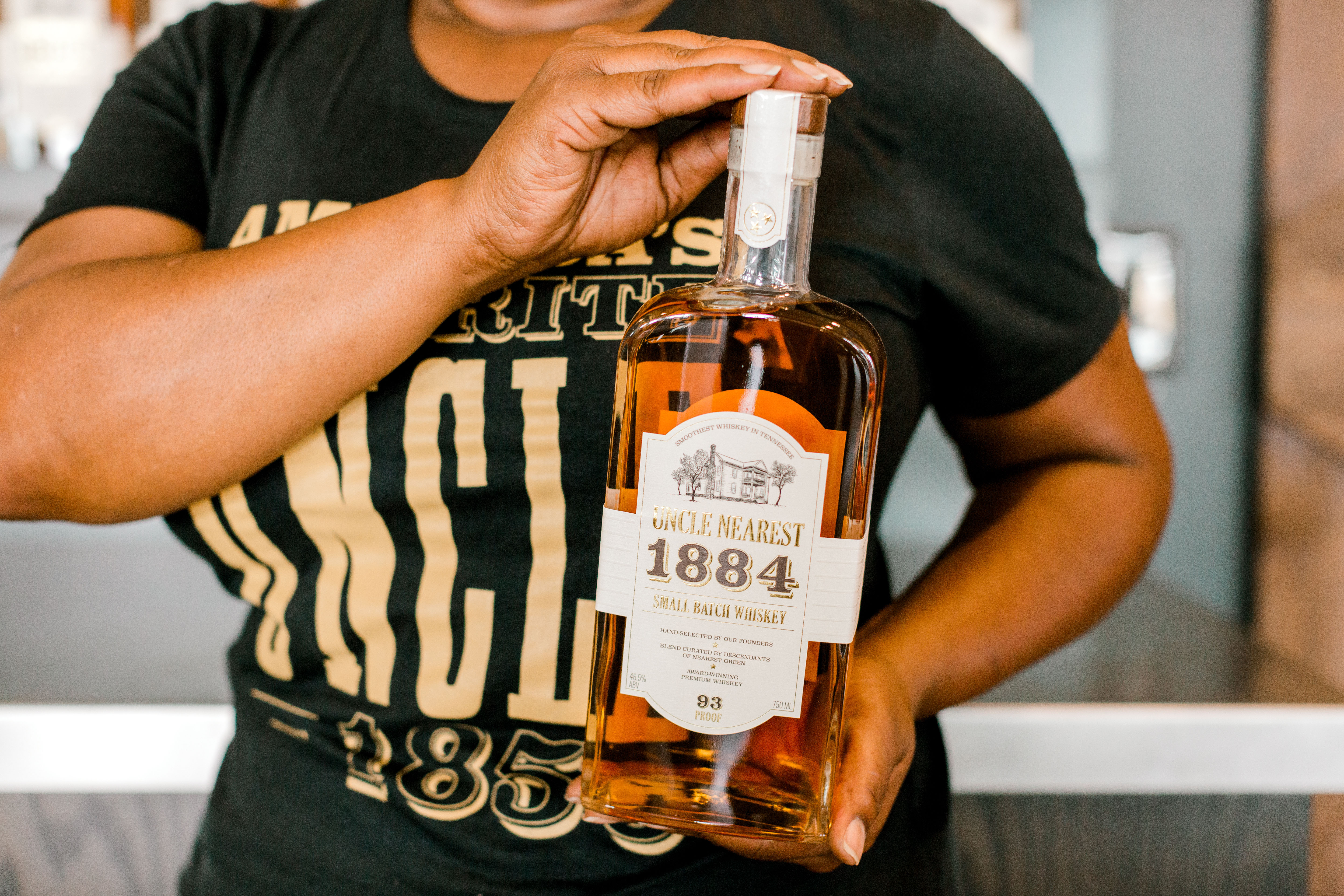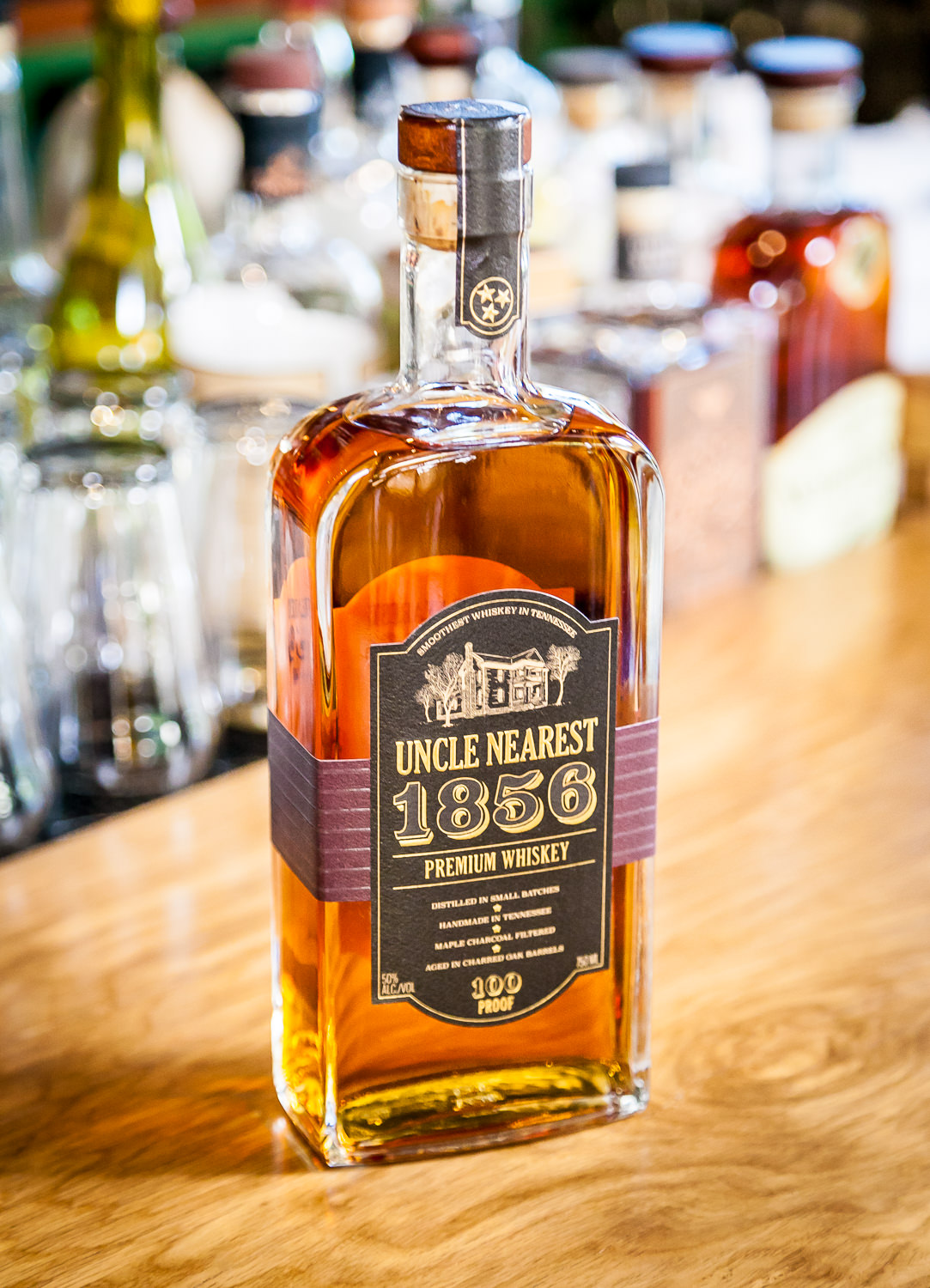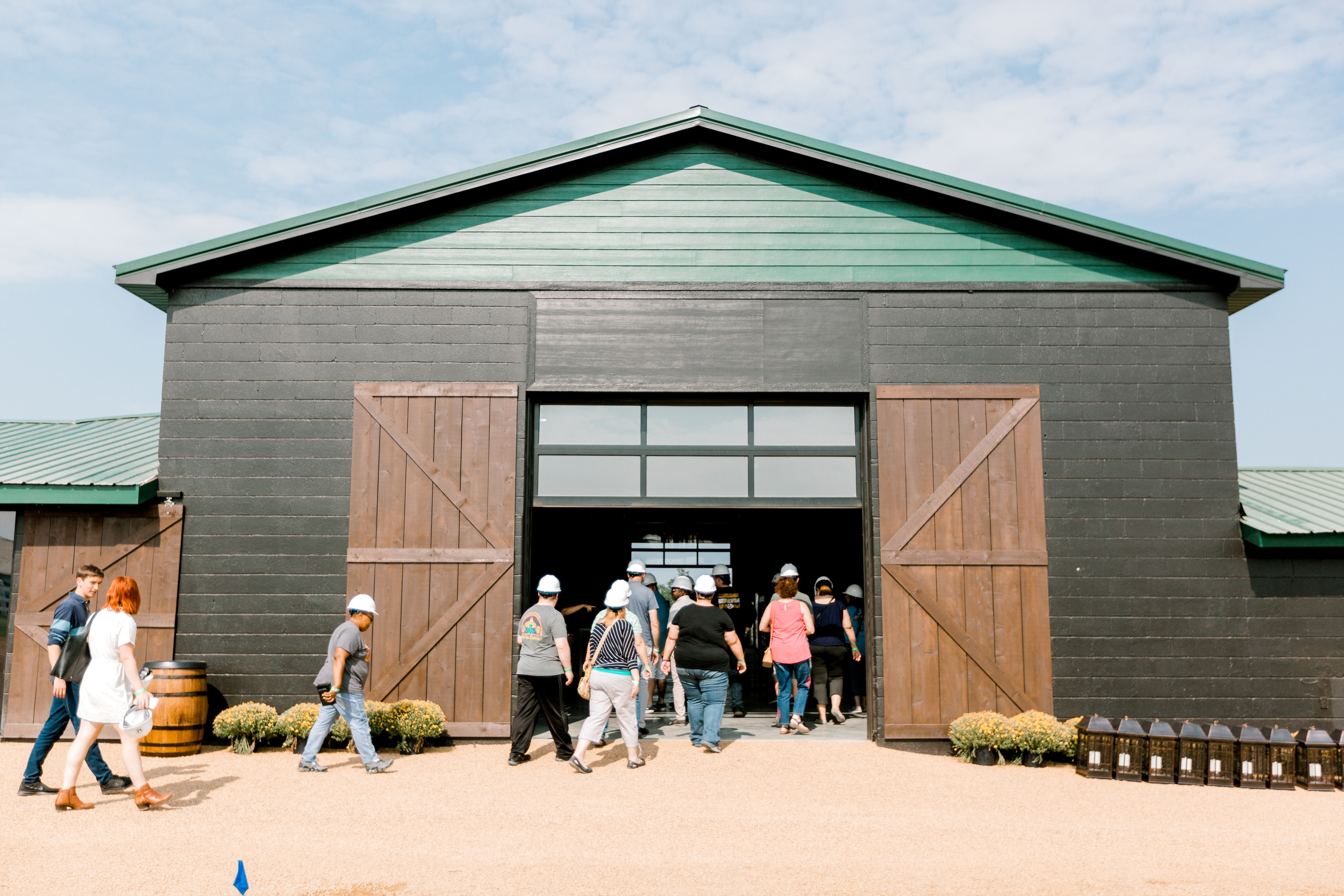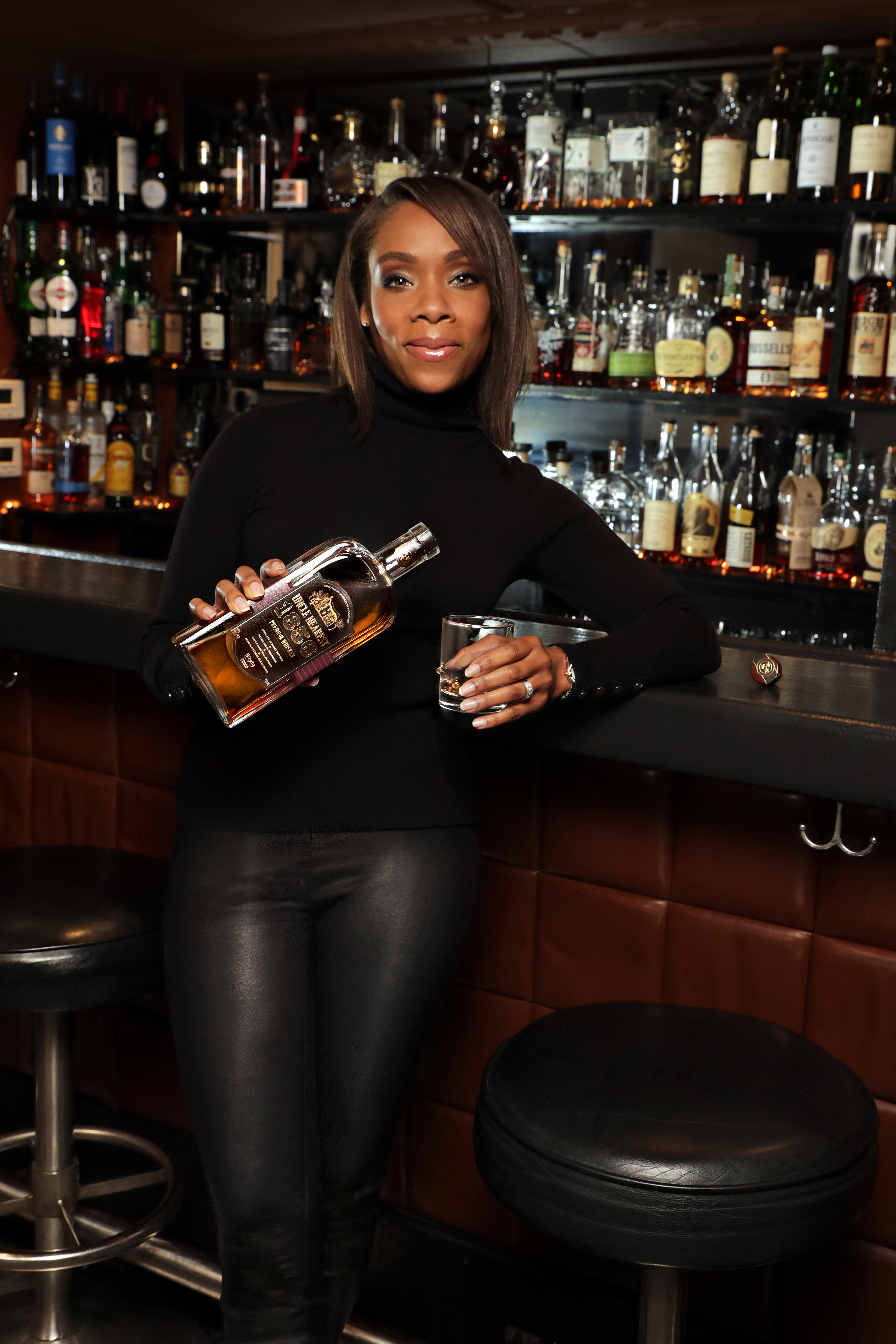Fawn Weaver’s path to becoming the first Black female distillery founder is a long and winding one. Weaver was a best-selling novelist when she first read about the man who taught Jack Daniel how to make Tennessee whiskey. Nathan “Nearest” Green, or Uncle Nearest as he was known, started out distilling while still enslaved and his mastery of the process created an entire genre of whiskey that’s beloved to this day. His impact is undeniable.
Uncle Nearest’s story captivated Weaver. She went so far as to move to Tennessee, search archives across the country, and speak with every surviving member of the Green family that she could find. A story emerged of an enslaved man whose whiskey-making ability was so refined that it was actually its own definable style. Nearest Green integrated sugar maple charcoal filtration, known as the Lincoln County Process today. In her research, Weaver also discovered that Nearest Green went on to become the very first master distiller of Jack Daniel’s first distillery after being freed from bondage.
Sadly, much of that history was forgotten during the 20th century. But according to Weaver’s research, the reason we know Uncle Nearest’s name was because Jack Daniel made sure everyone (at the time) knew exactly who made his whiskey. Unlike so many stories lost during this era, she found that the history had been recorded — waiting for Weaver to reveal it to the world.
As her research progressed, just telling the world the amazing story of Uncle Nearest wasn’t enough for Weaver. She reached out to one of Green’s descendants to start the label in 2017 and opened up the Nearest Green Distillery in 2019 to celebrate the work of the great whiskey master. Today, that whiskey is lauded as some the best Tennessee whiskey is the world, and Uncle Nearest is finally getting his due as an innovator.
I chatted with Weaver recently about a new partnership she’s helped form between Jack Daniel’s (where some of Nearest Green’s descendants still work) and Uncle Nearest whiskey. The two whiskey makers are putting up cash for the Nearest & Jack Advancement Initiative. It aims to help all BIPOC (Black, Indigenous, People of Color) folks advance in whiskey making with a distillery school and an accelerated apprenticeship program. It’s an initiative that seems poised to change the whiskey game and, speaking over the phone, Weaver comes off as rightfully excited about the future of her industry.
Check our conversation below!

When you first started your research into Uncle Nearest, what was the most surprising thing you learned about both Nearest and Tennessee whiskey?
Oh, well, the most interesting things would probably be twofold. One was that he was the first master distiller for Jack Daniel’s. Even The New York Times article did not allude to that. I don’t think that very many people knew that. We really had to go back into the records and find that. The reason that wasn’t really known is the current ownership of Jack Daniel’s Distillery believed that the distillery always stood where it is currently in Lynchburg, Tennessee. They didn’t realize that the Jack Daniel’s Distillery actually began on the farm where Jack grew up and where Nearest Green was the master distiller. That’s where Distillery No. 7 was located, in District No. 4. They had no idea. They knew that that distillery is where Nearest worked and where he taught Jack Daniel how to make whiskey.
And this is around the end of the Civil War, right?
Jack turned 18 the year that the civil war ended and that’s when Nearest was teaching him. So all of that is happening and he asked for Nearest Green to be his first master distiller — at the time it would be called a “head stiller.” Learning that was something that came out of the research.
Now, this is something that was well documented by Jack’s family but was forgotten generally. The distillery changed hands and then prohibition happened — and in Tennessee prohibition began ten years before the federal prohibition and was the last state to come out of prohibition. So most distilleries from that era died. And those that came back generally came back with different ownership. So let’s just say that people weren’t keeping documents like we’re keeping them now.
On the personal side, the most surprising thing was, as I began going and interviewing all of Nearest’s descendants one by one, and each one would allow me to take the photo albums, their family photo albums, to bring back to my research room and to do high res copies of them, things of that nature. What was so surprising to me was looking at the photos of Nearest’s children was the sense of pride they had in who they were and who they were descended from.
Whenever they were taking photos, they were always looking straight into the camera — full of confidence, shoulders back, chest out, head high. It’s one of the most beautiful things that I have seen in this journey is looking at the photos of his children and their grandchildren and knowing how prominent they became in the community and how prominent Nearest was when he was alive as well.
Did you find any other history about distilling by enslaved people? Or do we know about Nearest because he’s the only one that people wrote about?
I think he’s the only one that people wrote about. The unique thing with the story of Nearest Green is that he and Jack were not only friends and he was not only Jack’s mentor, but Jack made sure everybody knew he was his mentor. He made sure everybody knew who taught him. I haven’t found anybody else who gave credit to the slave who was doing the distilling for them. I haven’t found anybody who did that. If Jack had not done that and then if Jack’s descendants had not continued to give Nearest Green credit, there’s actually no way we would know the name.
Right. That’s a big boon for whiskey history.
Massive. Massive. People often don’t know why I would speak so kindly about Jack Daniel given the times and what happened. And I always say, “Do you understand that the only reason I’m able to talk about Nearest Green is that Jack made sure everybody knew who he was?”
This isn’t me coming in and unearthing a time capsule. This is literally me just me bringing to the forefront what Jack and his nephew and his great-nephews all made sure was documented.
It’s fascinating because the Green family continues to work at Jack Daniel’s. And now, you now have people that are direct descendants of Nearest working with you. How has the family looked at the birth of the Uncle Nearest whiskey?
They’re the biggest cheerleaders. Our master blender is Victoria Eady Butler and her three siblings all continue to work at Jack Daniel’s right now. So we definitely kept it in the family. So we’ve got one descendent on our side and they’ve got three!

Can you sort of walk us through the process of what makes your whiskey so unique and, well, delicious?
Absolutely. So number one, we start off with a really good juice. We have been sourcing from two distilleries the entire time. Both had me under NDA. One has released me from the NDA, so I can say Tennessee Distilling Group. We’ve been laying down all of our barrels with them from day one. And then the second one, for whatever reason, still has me under an NDA, even though I keep saying “guys, I think everybody knows at this point, you can release me from the NDA!” But they won’t.
So, anyhow, we start off with what I believe is a really, really good Tennessee whiskey. And then we take it through three additional steps. Number one, we age it longer. And so we may buy a barrel at five years, but we’re not putting it into our bottle until it’s eight years. So, what people identify as our flavor notes, they’re not the same as their flavor notes. That has to do with the fact that we’re buying the barrels and aging them longer. We have very little in the marketplace below eight years old. Our Uncle Nearest is 1856 and is a blend of between eight and 14-year-olds. But the majority of the barrels are nine and ten-year-olds.
And then our Uncle Nearest 1820 is always the single barrel and always a minimum of eleven-years-old. That is some tasty, tasty juice. And even though we have “11 years” on the bottle, some of those bottles actually have 15-year-old whiskey in it.
And then the youngest we have is seven-year-old for Uncle Nearest 1884. That is the small-batch where I choose the barrels. And then Victoria Eady Butler goes in and she tastes every single one.
How do you drink your whiskey?
The other day I made a New York sour with the 1884 Small Batch and it was great. But then in something like an old fashioned where you really need that spirit to shine through, I use the 1856.
You had just opened up your distillery when COVID hit. How are you weathering the shutdown?
Yeah. So we’ve been closed. We shut down in the middle of March and I made a decision that we would not reopen until we have no new cases in the U.S. You know, here in Tennessee when people are coming into Nashville, they aren’t local. These are people coming in from all over. So even if we don’t have new cases in Tennessee, that’s not who’s visiting the distilleries.
And so my team members are my first, first, first priority, and I just don’t want to take a risk. So I do not see us reopening until these cases start going down dramatically. And at the current moment, we’re headed in the wrong direction.
While all of this is happening, you teamed up with Jack Daniels to start an advancement initiative. You’ve pledged $5 million to advance African-Americans in the whiskey industry in America. How’d this partnership come about?
Absolutely. The Nearest Green Foundation and the Brown-Forman Foundation had already been working together on the Nearest Green School of Distilling. One of the things that I recognized when I was trying to find more people of color to bring into my own company was that so few applied. I would post for positions, and I would literally get no qualified people of color applying. At first, I didn’t understand it. And then the more I began to think about it, it made sense. In the American whiskey industry, if you think about it, most of the stories of what we’re familiar with, the legacy brands, they’re all someone’s great, great, great grandfather who began this brand. They’re all telling this story of their heritage.
And it’s all white men. We never see ourselves in the industry and that has everything to do with the fact that it is a heritage industry. There’s no other industry in which heritage is the main driver of the brand story. It’s a fascinating thing, but it’s unlike any other industry.
So the way that we treat diversity in this industry has to be very different because we have a unique challenge. You know, African-Americans generally don’t choose roles that our ancestors did not have a choice in, right? Our ancestors did not have the choice to decide if they were going to be distillers, or cotton pickers, or tobacco farmers. Those were the jobs they had to do. And so if you look in any of those industries, tobacco, cotton, or whiskey, you ain’t going to find us. And that’s because we didn’t have a choice.
What I concluded was for our industry to become more diverse, we had to have more people applying that were people of color. And the only way that was going to happen is if we made it feel welcoming. I go to colleges all over this country, and I talk to the students in the STEM program, and I say to them, “Hey, did you know distilling is an option with your degree.” I can tell you maybe one percent know that. The other 99 percent never thought about distilling as an option for them. And so we’ve got to get out there and we really have to make it cool, but you really need women and people of color to be forward-facing in order to do that. We had to figure out, “okay, well, we can’t get more African-Americans in, unless we show more African-Americans.” So how do we do that?
So what does that look like practically as you build the advancement program?
We were already working on the Nearest Green School of Distilling, for about the last year with Motlow College. Their president is African-American. I sat down with him and told him the challenge. And I asked if Nearest Green Foundation was willing to fund the Nearest Green School of Distilling, could we house it at Motlow? And he said, “Absolutely, hands down.”
And we began working on it and that’s when I realized I needed a partner on the school so I reached out to Jack Daniel’s and asked if Melvin Keebler — who is an African-American and number two at the Jack Daniel’s distillery — could work with Sherrie Moore, who used to be their head operations and now works for us. I knew they would work well together. They’re two of the smartest minds in Tennessee whiskey. So the two of them started writing the curriculum together with the staff at Motlow College.
They worked on that together for about six months. And so we’re now awaiting approval from the state. The moment we have that approval, it will go to the regional body. And once the regional body accredits it, it will be the first time we have an associate’s degree in distilling being offered in the United States. And it will be at the Nearest Green School of Distilling.

That’s fantastic.
So we’ve been working on that already for the last year on how to get young people of color and women into the industry. But with what happened first with Ahmuad Arbery then Breonna Taylor and then George Floyd, we’re like, “You know what, guys, we were doing the slow roast version of this. We need the microwave version as well.” And so then we began talking about other ways that we could create diversity faster in our industry and the solution to that became the Business Incubation Program, BIP.
Our goal is to help existing African-American micro-distilleries in the US that struggle to get capital, to get distribution, or to get their marketing, branding, and PR right. They’re figuring it out and they’re first-generation. So we’re essentially coming alongside these guys and giving them our resources and mentoring them and helping take them from simply surviving to thriving. We will not own any part of any of the businesses that we help. We are literally just trying to create a pipeline of successful African-American owned distilleries.
And then the third prong of the Nearest and Jack Advancement Initiative is the Leadership Acceleration Program and we call it LAP. This program is all about taking people that are in the industry and helping them to rise as quickly as possible. Essentially it’s an apprentice program. But usually, if you are an apprentice, you’re making no money. Well, most African-Americans are not going to leave a good-paying job in order to go make no money to learn a skill.
So what we are doing is we’re matching their salary at whatever their job level is currently. Then as an apprentice, they are going to be learning from the best in the business.
What does an apprenticeship look like?
We have as our first head distiller apprentice and we’ve already mapped out her program. It starts with almost six full months of manufacturing training and getting every certification from OSHA to ISO, to hazmat, green belt, every certification that will look incredible on her resume. That’s what she’s starting with.
Once all of those certifications are in place, she begins training over at Catoctin Creek Distillery. It’s a female-owned distillery and the master distiller is a female, Becky Harris. She’s also the president of the American Craft Spirits Association. After that stint, she’s going to Kentucky and training at Moonshine University while also training at two of the Brown-Forman Distilleries, and a couple of other craft distilleries in Kentucky. And in each place, she’ll literally be shadowing the master distiller.
So generally speaking, to get someone to the level of master distiller, you’re looking at ten to 15-plus years. We’re doing the microwave version of that.
That’s really phenomenal.
It’s the best of the best in this industry and we’re are all rallying around the same person to raise up the first female African-American master distiller of a major brand.








